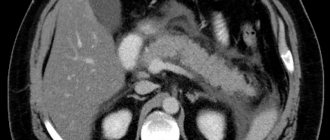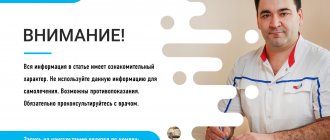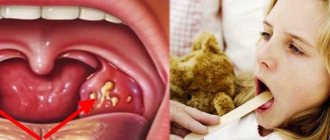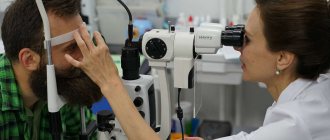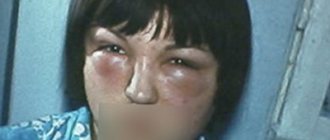Coccydynia or pain in the coccyx is the syndrome with which women most often come to the Yusupov Hospital. The coccyx is the lower part of the spinal column, next to which nerve fibers pass. With injuries or pathological processes in this area, periodic pain occurs, which can spread to the inner surface of the thigh, buttocks, and also manifest itself in the area of the reproductive organs.
Coccydynia, for which symptoms and treatment are specific to women, can cause suffering to a woman and affect her quality of life. Proctologists, neurologists, gynecologists and other experienced specialists at the Yusupov Hospital treat coccydynia using modern methods and means. If you experience periodic pain in the coccyx area, proctologists recommend not postponing your visit to the Yusupov Hospital, as this symptom may indicate serious pathologies.
What it is?
The coccyx is a small bone that ends at the end of the spine. It consists of several fused rudimentary vertebrae. The coccyx does not contain the spinal cord, but is surrounded by a large number of nerve endings that go from top to bottom. Despite the rudimentary nature of this bone, many important muscles are attached to it, which are involved in the processes of urination and defecation. Coccydynia is a pathological condition in which a person regularly or periodically experiences pain in the tailbone.
Analgesic methods
Today, in medical practice, special attention is paid to the elimination of pain. Different countries practice the organization of diverse institutions, the main task of which is the treatment of pain, including pain of unknown origin. As a rule, it is preferable to eliminate pain without the use of narcotics: local anesthetics, blockade of nerve fibers with novocaine, peloid therapy (hot mud applications) are used. Cortisone blockades, which were widely used in the past, are practically not used today, since they have lower effectiveness and are poorly tolerated by patients.
Causes
There are a huge number of reasons that can lead to the appearance of coccydynia:
- Injuries. If a person falls on his back or buttocks, he will most likely experience pain in the tailbone.
- Passive lifestyle. Many people like to sit with their legs tucked to their chest. This greatly increases the load on the tailbone and may cause pain. It is especially dangerous to sit like this on hard surfaces.
- Neuritis.
- Stress.
- Coccygeal fistula.
- Cracks and scars of the rectum.
- Neoplasms that put pressure on the nerve endings near the tailbone.
- Frequent constipation or diarrhea.
- Inflammatory processes in the muscles and nerves of the perineum or pelvis.
- Osteocondritis of the spine.
Women are much more likely (3-4 times) to encounter this disease due to the structural features of the genitourinary system and the birth process. In men, coccydynia mainly occurs after 40 years of age. It is worth noting that pain in the tailbone may also indicate problems with the kidneys, reproductive system, and intestines. A specific diagnosis can only be made by a doctor after collecting anamnesis and conducting research.
Anorectal neuralgia
With anorectal neuralgia, diffuse pain develops in the anal region, in some cases radiating to the thigh, buttocks and vagina. Such phenomena often occur in postmenopausal women and can be accompanied by various neurological and neurasthenic pathologies (neuroses, depression, hypochondria).
Often anococcygeus syndrome is neurogenic in nature. Many patients associate long-term pain with deadly pathologies; such patients often develop an obsessive fear of cancer; they require specialists to conduct a thorough and as complete examination as possible, as well as surgical treatment.
Symptoms
Pain in the tailbone is the first sign of coccydynia. It can appear after physical activity, sexual intercourse, or defecation. The sensation intensifies with sudden standing and palpation, as if the back is being “shot”. Over time, the disease may progress. This leads to spasms of the pelvic muscles, hips, pain in the groin and anus. A person literally cannot sit on a hard surface; he is forced to put something soft under him. If coccydynia is not treated, the pain becomes constant and is especially aggravated at night, preventing normal sleep.
During painful attacks, a person sweats greatly and the skin turns pale. They can also cause irritability and apathy, which can later lead to depressive disorder.
Unpleasant sensations can lead to gait disturbances. Irritable bowel syndrome and constipation often develop. Due to the fact that the process of defecation can be painful, a person tries to visit the toilet as little as possible. This leads to additional intestinal problems. It should be noted that the disease does not go away on its own. If left untreated, impotence or prolonged and painful erection, prolonged depression, etc. may develop. The disease requires professional therapy, like any other disorder of the musculoskeletal system, for example, intervertebral hernia.
To diagnose and further treat coccydynia, it is important for the doctor to establish the true cause of the pain. First of all, the specialist must find out whether the patient has had any injuries or operations in the coccyx area. Palpation and inspection are carried out. In addition to a general history taking, the specialist often sends the patient to the laboratory to donate blood, urine, and stool. An ultrasound of the abdominal organs, radiography of the spine, examination of the rectum, and genitourinary system may be prescribed.
During the diagnostic process, it is important to exclude the presence of the following diseases: hemorrhoids, anal fissures, prostatitis, neoplasms in the reproductive system, radiculitis, etc. Only in the absence of the above diseases can a doctor make a diagnosis of “primary coccydynia.”
How to avoid relapse
You should avoid repeated injuries to the back and pelvis, and protect yourself from hypothermia. It is important to regulate bowel movements to solve the problem of constipation and prolonged sitting on the toilet. Eating foods rich in fiber and proper drinking regimen will help.
If you have suffered from attacks of coccydynia, you should not overload your lower back. Try not to lie or sit in one position for a long time. Do warm-up and exercises, strengthen your back muscles. Instead of a soft chair, you should prefer a comfortable chair of medium hardness with back support.
Medical specialists take a comprehensive approach to identifying the nature of coccygeal pain. With us you will receive consultations with a neurologist, surgeon, proctologist, gynecologist and other doctors, undergo an ultrasound scan and additional diagnostics. We will quickly make a diagnosis and relieve pain after the first visit. The clinic has a physiotherapy department. The office is equipped with the latest technology.
Treatment
During therapy, it is important not only to eliminate pain. Most attention should be paid to treating the underlying disease (if present) that triggered the development of coccydynia. To reduce pain, doctors prescribe medications, and in especially advanced cases, inject anesthetics. Physiotherapy is also widely used: electrotherapy, ultrasound treatment, rectal massage, mud therapy, exercise therapy, acupuncture, etc. These techniques can speed up the healing process.
Surgical treatment is also used. It is resorted to in situations where other methods do not help and the pain syndrome remains. In this case, the surgeon removes the tailbone. This is also done when the rudiment becomes mobile after a fracture. In extremely rare cases, pain remains.
Ultrasonography
Ultrasound examination of the abdominal cavity makes it possible to diagnose the condition of organs, to exclude concomitant pathologies, and also to evaluate intestinal motility.
To diagnose this disease, other specialists are often involved - a urologist, gynecologist, andrologist. If no other diseases can be identified, and a symptom complex exists, the doctor can make a diagnosis - anococcygeus pain syndrome. Particular attention is paid to the psycho-emotional state of the patient, because there is a high probability that the cause of anococcygeus pain syndrome is a mental imbalance.
Prevention
The first thing you can do to avoid coccydynia and many other diseases is to visit your doctor regularly. A specialist can promptly identify concomitant diseases and prevent the development of coccyx pathology. If you have already discovered signs of coccydynia, you should immediately seek professional help. In the early stages, the disease is treated much easier and faster. In addition, it is worth taking care of the presence of comfortable orthopedic furniture in the workplace. Don't sit with your legs tucked to your chest, try to take the pressure off your tailbone. If it is not possible to purchase orthopedic furniture, try placing a small pillow - it is both more comfortable and safer. Last but not least, try to avoid injuries to the tailbone and pelvic organs. If this fails, consult a doctor immediately.
Coccydynia according to ICD-10
The International Classification of Diseases, 10th revision, is used by doctors to convert the clinical formulation of a disease into a code that provides convenient storage of data. According to ICD-10, coccydynia refers to sacrococcygeal degenerative processes that are not classified in other categories and has the code M53.3.
Patients visiting the Yusupov Hospital receive medical care that meets international standards. Coloproctologists regularly study world experience in treating this disease, innovative methods of its treatment and engage in scientific activities, the results of which are presented at various conferences and symposia.
One of the main advantages of the Yusupov Hospital is that the patient can receive a complex of diagnostic, therapeutic, and rehabilitation measures in one place. Coccydynia in women, the symptoms of which may be mistaken by the patient for manifestations of other diseases, requires long-term treatment. Patients turn to coloproctologists with varying degrees of severity of coccydynia; experienced specialists are ready to provide medical assistance even in severe cases.
Classification
Currently, coccydynia is usually divided into several types:
- traumatic;
- neurodystrophic;
- inflammatory-toxic;
- idiopathic.
There are also primary and secondary forms of the disease.
- In the primary form, the cause of the disease is a trauma to the coccyx.
- In the secondary form, the cause is a variety of etiological factors associated with gynecological, urological, and proctological diseases.
In turn, the secondary form is divided into:
- anorectal , in which pain occurs in the buttocks, perineum, rectum, anus;
- proctalgia , in which pain appears and spreads in the rectum.
Forecast
It is not easy to cure this disease, since very often there are difficulties in determining the etiological factors that provoke its development. However, in the process of a comprehensive study, a good specialist can choose the right treatment tactics and significantly improve the patient’s quality of life.
But in general, this disease is not associated with diseases leading to death. However, the disease causes significant discomfort, so treatment should be started as early as possible.
Pathogenesis
Due to injuries, inflammatory processes and ischemia, functional and morphological changes in the periosteum occur. As a result, persistent painful irritation appears. As the pathology develops, the outer fibrous membrane of the coccyx becomes unevenly compacted and sclerosed. Dystrophic lesions of the cambial cells of the periosteum and its disseminated irritation are also noted. Lymphoid infiltration and capillary ischemia occur. Foci of pathological bone formation of periosteal tissues form in the affected area.
About a third of cases of this disease are not associated with organic pathologies of the pelvic organs or injuries. In this case, we are talking about idiopathic coccydynia . In this case, the pathology is associated with pathomorphological manifestations in the presacral and hypogastric nerve plexuses. As a result, the outflow of venous blood worsens and the threshold of sensitivity to pain decreases.
To this day, scientists are conducting research into the etiopathogenetic aspects of this disease, since they have not been fully studied.
Anatomy of the coccyx


